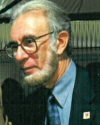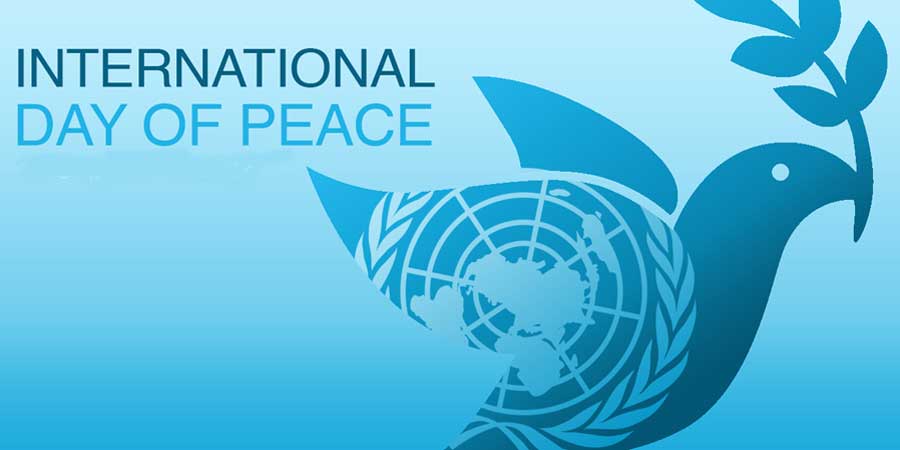The International Day of Peace
TRANSCEND MEMBERS, 7 Oct 2019
David Adams | Transition to a Culture of Peace – TRANSCEND Media Service
2 Oct 2019 – The International Day of Peace (IDP), as officially proclaimed by the United Nations, is certainly the most universal action for peace in our times, and there is no doubt that it contributes greatly to the consciousness throughout the world that we need to turn from the culture of war to a culture of peace.
With this in mind it would be good to be able to measure the IDP actions each year, to know if they are increasing or not, and to know if this is occurring throughout the world, or more in some regions than in others.
During the first decade of this century, extensive international surveys were conducted by the Culture of Peace Initiative (see surveys from 2005 and 2009 as documented in Wikipedia), but they were discontinued, and there was nothing to replace them until 2017 when I conducted the first IDP survey from CPNN, searching for articles by Google and using other, less complete surveys.
This is now the third time that I have done the survey – not an easy task requiring something like 100 hours of labor – and I continue to find hundreds of events throughout the world, with the largest number from USA/Canada and Western Europe.
There is no doubt that, despite my best efforts, we continue to under-estimate the number and scope of actions involved. Many actions are not put on the internet. In addition to the languages recognized by the United Nations (English, French, Russian, Arabic, Chinese and Spanish), I have searched via Google in Ukrainian, German and Portuguese, but no doubt there are actions described in articles in other languages as well.
There are other surveys of IDP events, but it is difficult to assess their data in some cases.
Pathways to Peace, the successor to the Culture of Peace Initiative, provides a map where people can enter their actions for the IDP. This year’s map has 642 entries, but perhaps half of them are from 2018, and perhaps half of the entries from 2019 are marked as meditation (not action in the sense defined by CPNN). The others from 2019 that are marked as music, march, or multiple actions have been included in the CPNN survey.
The Campaign for Nonviolence lists CNV 3314 total actions, mostly in the United States, but this includes multiple actions by the 205 sites listed on their map. I have included all the 205 sites in the CPNN data.
One Day One Choir says that for the International Day of Peace “since we started in 2014, more than a million people around the world have connected with us to sing for peace and unity,” There are almost a thousand entries on their map of the world, but I could not use the data because it seems to be an accumulaton of all the events since 2014, with no indication in what year or years the action occurred.
The website of Montessori schools says that “In 2017, “Sing Peace” involved over 150,000 children from some 65 different countries.” The site provides a listing of 1141 schools “signed up to sing” and these are shown on a map of the world,, but as in the case of OneDayOneChoir, it is not clear if this is an accumulation of data over many years or if it refers to actions in 2019.
In addition, I should mention the website of Peace One Day which states that “throughout the years, millions of people have been active on Peace Day in every country of the world. . . In 2016, after several years work with global management consulting firm McKinsey & Company, it was estimated that 2.2 billion people had been exposed to the Peace Day message, that 940 million were aware of the day and that 16 million behaved more peacefully as a result.” But since the website provides no listing or source for particular events, I don’t see how its claims. can be verified.
Failing to realize that the data from One Day One Choir and Montessori Sing Peace were not necessarily up-to-date, I included their data in the totals last year (2018). For that reason it makes no sense to compare this year’s CPNN total of 655 to last year’s total of 835. Although it is not possible to be precise, it seems likely that the number of IDP actions listed on CPNN might be as much as doubled if it were possible to obtain up-to-date information from One Day One Choir and the Montessori Schools.
Despite the incompleteness of the quantitative data, there is plenty of qualitative information to be found in the CPNN survey, as described in this month’s CPNN bulletin, and I think this justifies the labor involved. For example, it turns out that data cited from Colombia, Democratic Republic of Congo, France, Ukraine, and Yemen are not reflected in the other surveys mentioned above.
_________________________________________________
 Dr. David Adams is a member of the TRANSCEND Network for Peace Development Environment and coordinator of the Culture of Peace News Network. He retired in 2001 from UNESCO where he was the Director of the Unit for the UN International Year for the Culture of Peace. Previously, at Yale and Wesleyan Universities, he was a specialist on the brain mechanisms of aggressive behavior, the history of the culture of war, and the psychology of peace activists, and he helped to develop and publicize the Seville Statement on Violence. Send him an email.
Dr. David Adams is a member of the TRANSCEND Network for Peace Development Environment and coordinator of the Culture of Peace News Network. He retired in 2001 from UNESCO where he was the Director of the Unit for the UN International Year for the Culture of Peace. Previously, at Yale and Wesleyan Universities, he was a specialist on the brain mechanisms of aggressive behavior, the history of the culture of war, and the psychology of peace activists, and he helped to develop and publicize the Seville Statement on Violence. Send him an email.
Go to Original – decade-culture-of-peace.org
Tags: Activism, Human Rights, Indigenous Rights, International Day of Peace, Nonviolence, Peace, UN
DISCLAIMER: The statements, views and opinions expressed in pieces republished here are solely those of the authors and do not necessarily represent those of TMS. In accordance with title 17 U.S.C. section 107, this material is distributed without profit to those who have expressed a prior interest in receiving the included information for research and educational purposes. TMS has no affiliation whatsoever with the originator of this article nor is TMS endorsed or sponsored by the originator. “GO TO ORIGINAL” links are provided as a convenience to our readers and allow for verification of authenticity. However, as originating pages are often updated by their originating host sites, the versions posted may not match the versions our readers view when clicking the “GO TO ORIGINAL” links. This site contains copyrighted material the use of which has not always been specifically authorized by the copyright owner. We are making such material available in our efforts to advance understanding of environmental, political, human rights, economic, democracy, scientific, and social justice issues, etc. We believe this constitutes a ‘fair use’ of any such copyrighted material as provided for in section 107 of the US Copyright Law. In accordance with Title 17 U.S.C. Section 107, the material on this site is distributed without profit to those who have expressed a prior interest in receiving the included information for research and educational purposes. For more information go to: http://www.law.cornell.edu/uscode/17/107.shtml. If you wish to use copyrighted material from this site for purposes of your own that go beyond ‘fair use’, you must obtain permission from the copyright owner.
